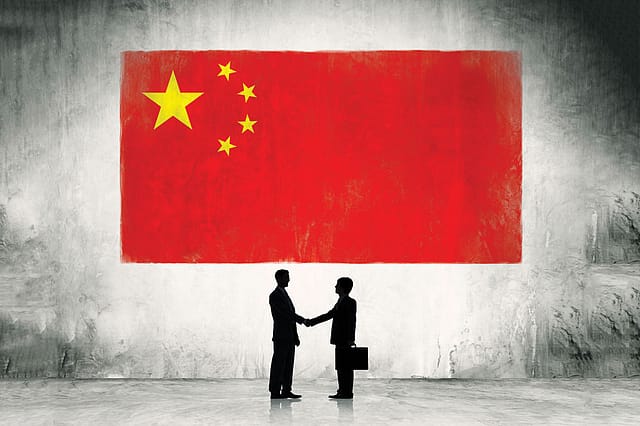China’s Soft Underbelly

FIVE YEARS AGO, American think-tanks predicted that China would overtake the US as the world's largest economy by 2030. No one today thinks that will happen by 2030—or at any time in the foreseeable future.
China's economic engine is stalling. GDP growth in 2025 is officially projected at 5.1 per cent.
Most analysts believe it will be below 4.5 per cent.
Things are likely to get progressively worse. Economists place China's long-term annual GDP growth rate at 3.5 per cent or less. With the US economy likely to grow at an annual average of 2.5 per cent, the current gap between US GDP ($30.51 trillion) and Chinese GDP ($19.23 trillion) will remain relatively unchanged well into the 2030s.
China has a soft underbelly. Its real estate sector, which contributes over 25 per cent to China's GDP, remains in chronic stress. Domestic consumption has fallen. Inflation is below 0.50 per cent, giving rise to fears of the deflationary spiral Japan underwent in the early 1990s.
China's demographic dividend has ended. It began in 1995 and tapered off in 2020. Between 1995 and 2020, its peak demographic years, China's GDP surged more than 40x from $0.36 trillion to $14.69 trillion.
Japan experienced a similar 25-year spurt in growth post-World War II between 1960 and 1985 when it briefly became the world's second largest economy behind the US. With GDP now growing at just over 1 per cent a year, Japan will be overtaken by India as the world's fourth largest economy at the end of 2025.
2025 In Review
12 Dec 2025 - Vol 04 | Issue 51
Words and scenes in retrospect
China has another Japan-like problem: ageing. The average Chinese is now 40 years old compared to the average Indian, who is 28 years old. Japan is already the world's oldest major country with the average Japanese being 50 years old. Insular China, with birth rates falling, could be heading in the same direction.
Like Japan, China's population is shrinking. Japan's population at its peak was 128.5 million. It is projected to fall to less than 100 million by 2050. According to a United Nations report, China's population is likely to nearly halve to 770 million by the end of this century. India's population in contrast, the UN report says, will plateau at 1.51 billion in 2100.
India's demographic dividend began in 2020 and will last up to 2045, peaking in the mid- 2030s. It is crucial therefore to increase India's GDP growth rate from 6.5 per cent to over 8 per cent during this period. Upskilling is the key so that the demographic dividend is fully harvested.
China's problems don't end with declining demographics. Though the tariff war with the US may ease after talks between Chinese President Xi Jinping and US President Donald Trump, the adversarial relationship between the two countries will hobble China's all-round growth.
Trump's attack on Harvard University in particular is aimed at its large number of Chinese students, currently just over 1,200. They account for 20 per cent of all international students at Harvard.
Since the 1990s, several Harvard professors have received large grants and donations from China for academic research. Graduate Chinese students with close ties to the Chinese Communist Party (CCP) often carry back to China confidential tech and academic research material. This had been regular practice for three decades. The joke among Chinese students at Harvard is that it is their 'home' university, given the access they have.
In the geopolitical contest with the US, China is using rare-earth minerals as a bargaining chip. While several countries have rare-earth minerals used in magnets in electric cars, aircraft, mobile phones and satellites, China controls 90 per cent of rare-earth mineral processing. Western countries are racing to find alternative supplies.
China's GDP in 2008 was $4.42 trillion, strikingly similar to India's GDP projected by the International Monetary Fund at $4.19 trillion in 2025. China's great economic leap forward came during its peak demographic years between 2008 and 2018 when GDP surged to $13.89 trillion, tripling the Chinese economy in a decade at a compounded annual growth rate (CAGR) of over 12 per cent.
That era is over. China's structural problems weigh it down. Ghost towns with empty buildings reflect the over-supply that dogs the Chinese economy. Unless China can export more by resolving its trade war with the US, Beijing's economic engine will run out of steam.
